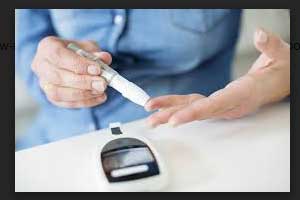- Home
- Editorial
- News
- Practice Guidelines
- Anesthesiology Guidelines
- Cancer Guidelines
- Cardiac Sciences Guidelines
- Critical Care Guidelines
- Dentistry Guidelines
- Dermatology Guidelines
- Diabetes and Endo Guidelines
- Diagnostics Guidelines
- ENT Guidelines
- Featured Practice Guidelines
- Gastroenterology Guidelines
- Geriatrics Guidelines
- Medicine Guidelines
- Nephrology Guidelines
- Neurosciences Guidelines
- Obs and Gynae Guidelines
- Ophthalmology Guidelines
- Orthopaedics Guidelines
- Paediatrics Guidelines
- Psychiatry Guidelines
- Pulmonology Guidelines
- Radiology Guidelines
- Surgery Guidelines
- Urology Guidelines
Blood Sugar control technologies in adults with Diabetes-ADA guidelines released

Blood Sugar control technologies in adults with Diabetes, the new guidelines have been released.
American Diabetes Association (ADA) has released guidelines for the use of blood sugar control technologies in adults diabetes patients. The guideline has been published in Annals of Internal Medicine.
In 2019, a section of diabetes technology which covered devices, hardware, and software that persons with diabetes use to help manage blood sugar levels was added in the Standards of Medical Care in Diabetes by the ADA. Such technology includes insulin pens or pumps and meters or continuous glucose monitors that measure the blood sugar. The recent synopsis addressed devices that monitor blood sugar level and deliver insulin at the same time, and software that serves as a medical device by supporting diabetes self-management.
Recommendations for Self-Monitoring of Blood Sugar
- (Grade B recommendation)- Most patients using intensive insulin regimens (multiple daily injections or insulin pump therapy) should assess sugar levels using self-monitoring of blood glucose (SMBG) or continuous glucose monitoring (CGM) before meals and snacks; at bedtime; occasionally postprandially; before exercise; when they suspect low blood sugar; after treating low blood sugar until they are normoglycemic; and before critical tasks, such as driving. (Grade B recommendation).
- (Grade B recommendation)- For patients using less frequent insulin injections, SMBG may help guide treatment decisions as part of a broad educational program. (Grade B recommendation)
- (Grade E recommendation)- Patients should receive ongoing instruction and evaluation of technique, results, and their ability to use the data to adjust therapy. (Grade E recommendation)
Glucose Meter Accuracy- Recommendation
- (Grade E recommendation)- Health care providers should be aware of medications and other factors that can interfere with glucose meter accuracy and choose appropriate devices for their patients on the basis of these factors.
- (Grade A recommendation)- Sensor-augmented pump therapy can be considered for children, adolescents, and adults to improve glycemic control without increasing overall or severe hypoglycemia. Benefits correlate with ongoing consistent use of the device.
- (Grade E recommendation)- When CGM is prescribed, intensive diabetes education, training, and support are required for optimal implementation and ongoing use of a continuous glucose monitor.
- (Grade E recommendation)- Persons who have been successfully using continuous glucose monitors should have continued access across third-party payers.
Recommendations for Real-Time Continuous Glucose Monitor Use in Adults
- (Grade A recommendation)- When used properly, real-time CGM in conjunction with intensive insulin regimens is a useful tool to lower HbA1c levels in adults with type 1 diabetes who are not meeting glycemic targets.
- (Grade B recommendation)- Real-time CGM may be a useful tool in those with hypoglycemia unawareness or frequent hypoglycemic episodes.
- (Grade A recommendation)- Real-time CGM should be used as close to daily as possible for maximal benefit.
- (Grade B recommendation)- Sensor-augmented pump therapy with automatic low-glucose suspend can be considered for adults with type 1 diabetes at high risk for hypoglycemia to prevent episodes of hypoglycemia and reduce their severity.
Recommendations for Use of Intermittently Scanned Continuous Glucose Monitors: Recommendation
(Grade C recommendation)- Use of an intermittently scanned continuous glucose monitor can be considered as a substitute for SMBG in adults with diabetes requiring frequent blood sugar testing.
To read the full guideline, follow the link
DOI: 10.7326/M19-1638

Disclaimer: This site is primarily intended for healthcare professionals. Any content/information on this website does not replace the advice of medical and/or health professionals and should not be construed as medical/diagnostic advice/endorsement or prescription. Use of this site is subject to our terms of use, privacy policy, advertisement policy. © 2020 Minerva Medical Treatment Pvt Ltd